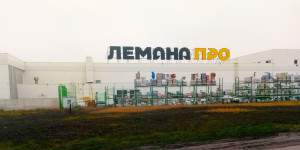

deep insights, facts & figures

The Sagaflor specialist dealer cooperative is giving thought to the garden centre of the future
The German consumer market for garden products is dominated by the garden centres belonging to the DIY stores. According to a projection from the market research company IBH Retail Consultants, they achieved a market share of 27.0 per cent in 2011. Next come nursery gardens and florists at 16.7 per cent, followed by tree nurseries at 13.9 per cent. The specialist garden centres, with their market share of 11.9 per cent, come no higher than fourth. The cooperative organisations play a significant role in this market segment. Of particular note here is Sagaflor, which lies ahead of Egesa-Zookauf, NBB Egesa and Ekaflor, and is also active in the specialist pet trade. The 515 active sales outlets affiliated to Sagaflor in the garden sector recorded sales of some € 750 mio in 2010. This means they are positioned fourth, right behind DIY retailers Obi, Bauhaus and Hornbach, in the ranking by garden sales. Sagaflor offers its members several different marketing strategies. Bellandris is a large-format system designed for owner-operated garden centres with a floorspace in excess of 3 500 m²; there are 45 outlets in this category. A further 87 garden centres are managed by Sagaflor members under the “grün erleben” system. And available to the proprietors of smaller sales outlets is a specialist grouping, “…da blüh’ ich auf!” Apart from the typical functions of a cooperative such as buying, marketing and location planning, central office also concerns itself with the continuing development of the different formats. Now it has presented its thoughts on the garden centre of the future. The trend nowadays is towards large-format garden centres. But will that still be feasible in 20 or 30 years’ time? And what should be the reaction to the fact that the population is ageing or that internet sales are becoming more important? How can the cost of fuel be contained? And how should one react to the trend towards the city with the inevitably high real estate prices? Sagaflor put these questions to HPW, a UK company that specialises in planning retail locations. Gary Wilburn of HPW presented several proposals for solving these problems to the Sagaflor partners. His starting point is a garden centre of up to three floors, with outdoor sales areas on both the ground floor and the third level. The hothouse is located on the middle storey, where there is also a café. The energy balance is shaped by solar installations to generate power and warm water, as well as heat pumps and…
Related articles
Read also

 Menü
Menü












 Newsletter
Newsletter